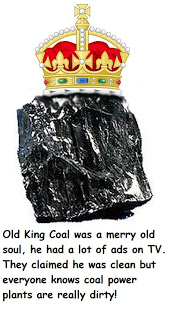Formerly known as the World Coal Association, FutureCoal: The Global Alliance for Sustainable Coal The group’s rebranding was launched this week.
Aaron Larson
Wed, November 22, 2023
Speaking at the 5th annual India Coal Conference in New Delhi, FutureCoal CEO Michelle Manook said, “Government and finance policies, which embrace a ‘cancel coal’ mantra, are short-sighted and undermine the very ambitions we seek to achieve as a global community.” Formerly known as the World Coal Association, FutureCoal: The Global Alliance for Sustainable Coal is a multi-lateral organization representing the entire coal value chain including coal producers, suppliers, and consumers such as power, steel, cement, and aluminum industry companies. The group’s rebranding was launched this week. “The reality is, coal will be here for the foreseeable future, and the future of coal beyond combustion gains steady momentum. As a coal value chain, we need to transform, unite, and ensure that a responsible narrative informs global policy setting,” said Manook (Figure 1). “We need to reframe this debate to the reality. There is no legitimate reason for coal not to participate in any energy transition. Abated coal solutions exist and they must be embraced.”

1. FutureCoal CEO Michelle Manook. Courtesy: FutureCoal[/caption]
FutureCoal says coal’s enduring presence acknowledges countries’ autonomy in selecting energy sources that meet their specific needs, complementing renewables during intermittent periods and serving as a crucial factor for coal-dependent nations to ensure energy security, affordability, and reliability. The group points to the global energy crisis of 2021–2023 as a case in point for the importance of coal. FutureCoal noted the resilience of coal as a power generation source mitigated severe consequences that could have escalated without coal as a backup. “The closure of European industrial operations and the risk of populations suffering through unaffordable energy costs or no energy at all exemplifies the crucial role of coal,” FutureCoal said. According to the International Energy Agency’s (IEA’s) most recent Coal Market Update, issued in July 2023, a new record global high of 10,440 TWh of electricity was generated from coal in 2022. This figure represented 36% of the world’s total electricity generation. While many industry observers believe coal use in the electricity sector will decline substantially in coming decades, FutureCoal says some experts predict coal will remain the single largest source of electricity worldwide through 2040. “Despite the growing emphasis on renewable energy sources, coal remains a key player due to its abundance, cost-effectiveness, and established infrastructure in many countries,” the group said. Coal does play an important role in the energy supply of more than 80 countries, not only in terms of electricity, but also for heat production. In many countries, coal is used for residential heating during colder months from district heating systems supplied by coal-fired combined heat and power (CHP) plants. FutureCoal says while the focus is often on electricity generation, “it’s important to remember that coal’s contribution to global heat supply is also significant.” FutureCoal said coal abatement technologies can capture up to 99% of some harmful emissions. Existing coal abatement technologies include a range of efficient solutions that support both power and heat utilities. These include high-efficiency and low-emissions (HELE) plants such as ultrasupercritical (USC) units; CHP facilities; integrated gasification combined cycle (IGCC)-based technology; and co-firing coal with biomass. To achieve high rates of emission control, sulfur dioxides (SOx), nitrogen oxides (NOx), and particulate matter (PM) can all be captured to various degrees, and the waste byproducts reused in industry and construction. Other emissions, such as heavy metals, can also be captured to a large extent and safely managed. While FutureCoal does not focus greatly on carbon capture and storage (CCS) or carbon capture, utilization, and sequestration (CCUS), it does promote a Sustainable Coal Stewardship (SCS) program. SCS has a strong focus on abated coal innovation and technologies. Under SCS, abated coal has a broader definition. “It encompasses a range of responsible practices, emissions controls, efficiency gains, and advanced coal opportunities,” FutureCoal says. Many power industry insiders believe hydrogen (H2) is poised to play a pivotal role in the transition to cleaner energy resources. Surprisingly, FutureCoal says hydrogen can be produce more cheaply with coal than through other sources. “The cost of producing hydrogen from coal with CCUS [is] three times less expensive than producing low-carbon hydrogen through water electrolysis,” the group said. Specifically, it said electrolysis costs from $3 to $7.50 per kilogram (kg) of H2 produced, while the IEA reportedly pegs the average cost of producing hydrogen from coal with CCUS at $1.40–$3.10/kg H2. Meanwhile, FutureCoal said another source suggests that coal gasification with CCUS typically costs $1.90−$2.40/kg H2, with costs as low as $1.60/kg H2 in China. And clean coal-to-hydrogen projects are not just a concept. The world’s largest coal-to-hydrogen project was placed in operation in Yulin, central Shaanxi, China, in September last year. The plant boasts a total hydrogen production capacity of 350,000 tonnes annually and is expected to reduce carbon dioxide emissions by approximately 220,000 tonnes annually. “The conversion of coal to hydrogen represents an innovative application of coal abatement technologies. It simultaneously assists coal-dependent nations in achieving their development goals and decarbonization ambitions,” FutureCoal said. “A misinformed coal narrative, misinforms the market. This narrative must be corrected if we are to achieve global economic and sustainability goals,” Manook said.
—Aaron Larson is POWER’s executive editor (@POWERmagazine).




No comments:
Post a Comment